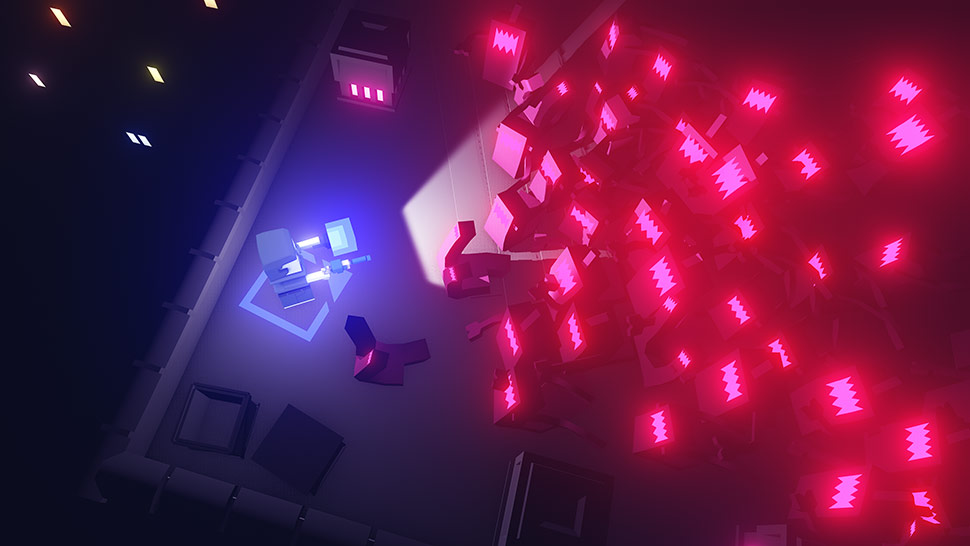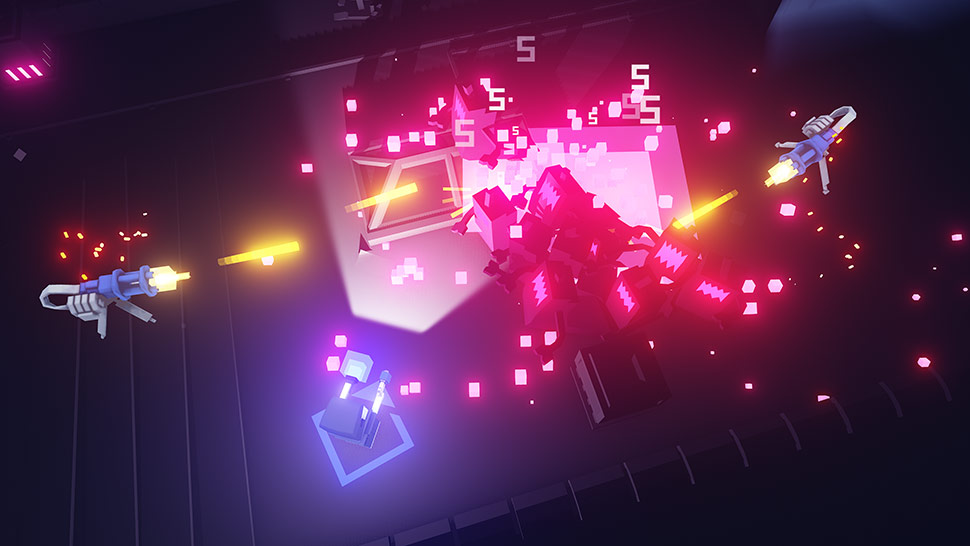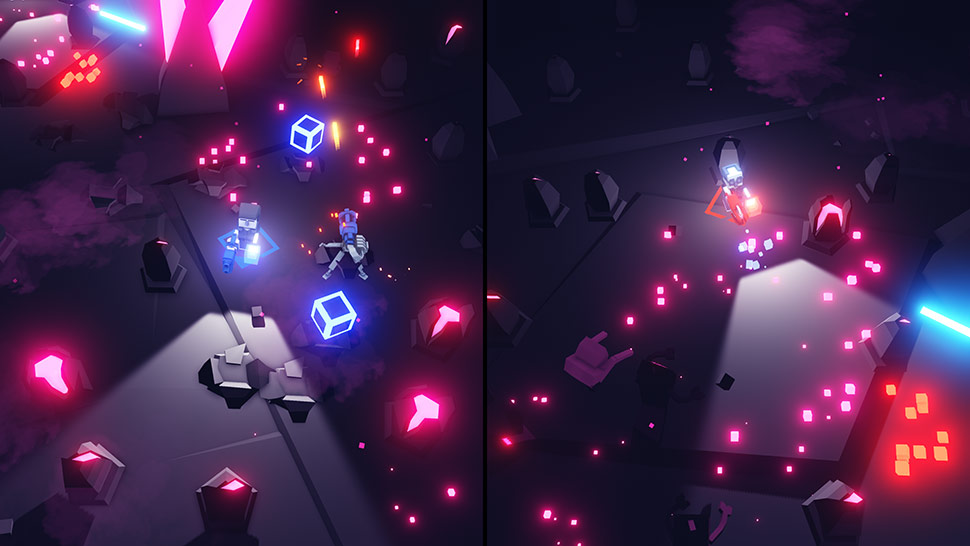It Came from Space and Ate Our Brains Review

 By Kevin Mitchell | Feb 13, 2020
By Kevin Mitchell | Feb 13, 2020
Initially released in 2015 on PC via Steam, It Came from Space and Ate Our Brains has been completely overhauled. The somewhat serviceable online mode has been cut (though both Steam and PS4 have ways to play local multiplayer over the internet). While Steam users can opt into the older version that still features online gameplay, based on my hours with the game, you may want to reconsider. Suit up, nameless heroes - it's time to take back the planet!

As an arcade-style twin-stick shooter, you and up to three friends are tasked with driving back the glowing neon-tinted aliens that have invaded Earth. The campaign spans six missions, with players progressing across checkpoints (safe houses) before reaching and destroying a massive alien egg to complete each level. Four difficulty options let players customize the experience. Playing solo on medium, I completed the entire campaign without dying once (there's even a trophy for your first death). However, when I attempted one of the final levels on insane, the faster, tougher, and deadlier enemies overwhelmed me within minutes. The missions are lengthy and varied, taking you across rooftops, through radioactive sewers, into medical clinics, along riverside farmland, and beyond.
Despite the varied locales, the game's distinctive monotone visual style eschews color except for highlighting light sources, offering hope in these dark times. These light sources can be destroyed to reveal items, temporary upgrades, or currency for permanent upgrades (lasting through the current level). You might find a glowing crack in a wooden crate abandoned on a rooftop or fire barrels illuminating darkened sewers. Players are distinctly colored but lack customization options (player one will always be blue, for instance). Note that while players can drop out at any point, there's no drop-in support, and multiplayer is split-screen only.

Like players, enemies stand out against the gray environments thanks to their neon elements. As you progress through the campaign, enemy variety evolves, introducing more formidable foes (including some that blend into the environment). While the first couple of levels feel manageable despite 20-to-1 odds, the invading species soon mutates into swift-moving adversaries that dodge bullets and surround you instantly. Later levels introduce even more robust enemies, including those that launch themselves at you.
Each campaign level is self-contained, with no weapon progression carrying over. Everyone starts with a basic pistol and flashlight. As you eliminate alien threats, you earn points to spend on upgrades and additional weapons like plasma guns, shotguns, and machine guns. I recommend focusing on a single weapon per level to fully upgrade it before the finale. A fully upgraded plasma gun becomes a multi-shot death dealer covering wide areas, while the machine gun transforms into a single-handed mini-gun delivering consistent damage.

Destroying glowing environmental elements yields valuable items. Medkits restore one of your four heart containers, turrets help clear sections, and shields enable damage-free rushes through enemy groups. You can only hold one item at a time, requiring strategic use of current items to pick up new ones. Temporary upgrades let you test other weapons briefly, and a rechargeable boost ability can save your life when surrounded, though it must fully recharge between uses regardless of duration.
Simply Put
It Came from Space and Ate Our Brains is an enjoyable local multiplayer twin-stick shooter featuring smooth gameplay mechanics, responsive controls, and a captivating visual style. While the lack of drop-in support seems odd given the lengthy levels, a wave-based survival mode with twelve levels supplements the six-mission campaign. The absence of online multiplayer, especially on PlayStation 4, remains a notable drawback.
Note: It Came from Space and Ate Our Brains was reviewed on PlayStation 4. A digital copy of the game was provided by the publisher/developer.




